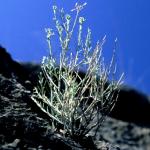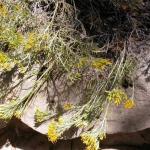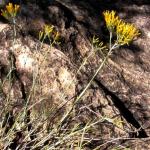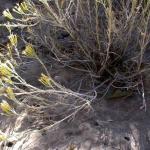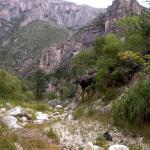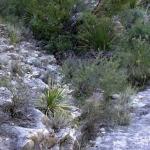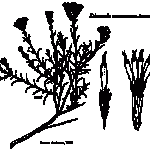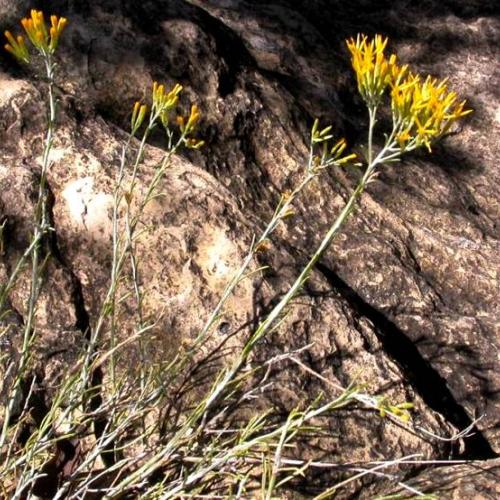Ericameria nauseosa var. texensis (Guadalupe Rabbitbush)
Family
ASTERACEAE
Synonyms
CHRYSOTHAMNUS NAUSEOSUS (PALLAS EX PURSH) BRITTON SSP. TEXENSIS L.C. ANDERSON
Common Name
Guadalupe Rabbitbush
| USFWS | State of NM | USFS | BLM | Navajo Nation | State Rank | Global Rank | R-E-D Code | NMRPTC Status | Strategy Status |
|---|---|---|---|---|---|---|---|---|---|
| SEN | S2 | G5T2T3 | 2-1-2 | R | SS |
| Overall Conservation Status | Documented Threats | Actions Needed |
|---|---|---|
| EFFECTIVELY CONSERVED | No Information |
Status surveys on abundance, distribution and threats |
Description
Low spreading shrub 2-3(5) dm tall, intricately branched; leaves grayish-green, alternate, entire, linear, tomentulose, tips mucronate; inflorescence a paniculate cyme; heads discoid, 8-11 mm long, 1.8-2.1 mm wide, phyllaries 16-22, outer ones sometimes tomentose and/or ciliate, becoming glabrous, with prominent costal nerves; disk flowers 4-5, yellow; corollas 8.5-10.8 mm long, lobes 0.6-1.3 mm long, lanceolate, erect-ascending; stigmas with stigmatic lines much longer than style-branch appendages; achenes cylindric, 4-6 mm long, glabrous, pappus of capillary bristles, 5.2-7.4 mm long. Flowers in September and October.
Similar Species
Distinguished from other subspecies of Ericameria nauseosa by a considerably shorter pappus and exceptionally long stigmatic areas.
Distribution
New Mexico, Eddy and Otero counties, Guadalupe and Brokeoff mountains; adjacent Texas, Culberson County.
Habitat
In crevices on faces of limestone cliffs and huge boulders of canyon woodlands, less frequently in open gravel alluvium of stream beds in piñon-juniper woodland and Chihuahuan desert scrub; 1,500-2,150 m (4,900-7,000 ft).
Remarks
The range of this variety was extended in 1993 by discovery of a Brokeoff Mountains population. This is a locally common taxon endemic to the Guadalupe-Brokeoff range of mountains.
Conservation Considerations
Surveys done in the last 10 years show no decline in the population numbers. Its remote rocky habitats offer considerable protection from human impacts.
Important Literature
*Anderson, L.C. 1980. Morphology and biogeography of Chrysothamnus nauseosus ssp. texensis (Asteraceae): A new Guadalupe Mountains endemic. Southwestern Naturalist 25(2):197-206.
Information Compiled By
Ken Heil, Joey Herring 1999
For distribution maps and more information, visit Natural Heritage New Mexico

